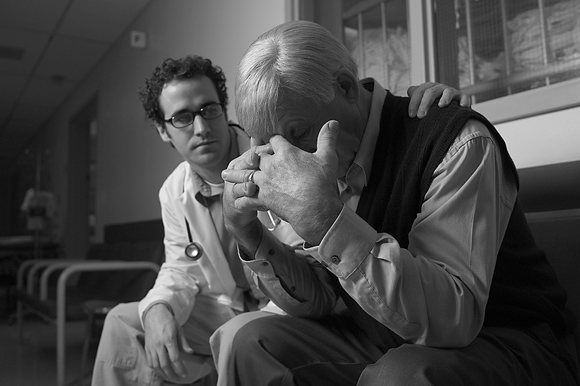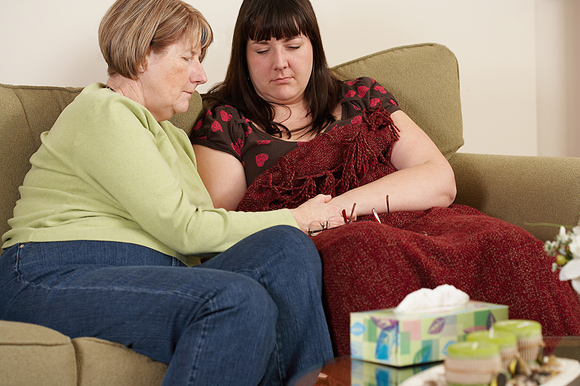Understanding Death and Grieving

Doctor sitting with a grieving man
Coping with death in healthy ways involves a process of grieving a loss. Most psychologists recognize a process people move through as they cope with the death or loss of a loved one; they often refer to it as the grieving process.

Two grieving women
The Grieving Process
- The grieving process usually consists of the following stages.
- Note that not everyone goes through all these stages or in this exact order.
Denial
- In this first stage, the person cannot believe that the loss has actually occurred.
- This protects the person from becoming overwhelmed by emotions.
Anger
- A person may feel powerless over the loss and lash out at what may or may not have caused the loss.
Bargaining
- As the loss becomes a reality, the grieving person may try to bargain with life or with a higher power to replace the loss or reverse the course of history.
Depression
- Depression may occur from a prolonged sense of loss and sadness.
- It is important that individuals experiencing depression get help from a medical professional.